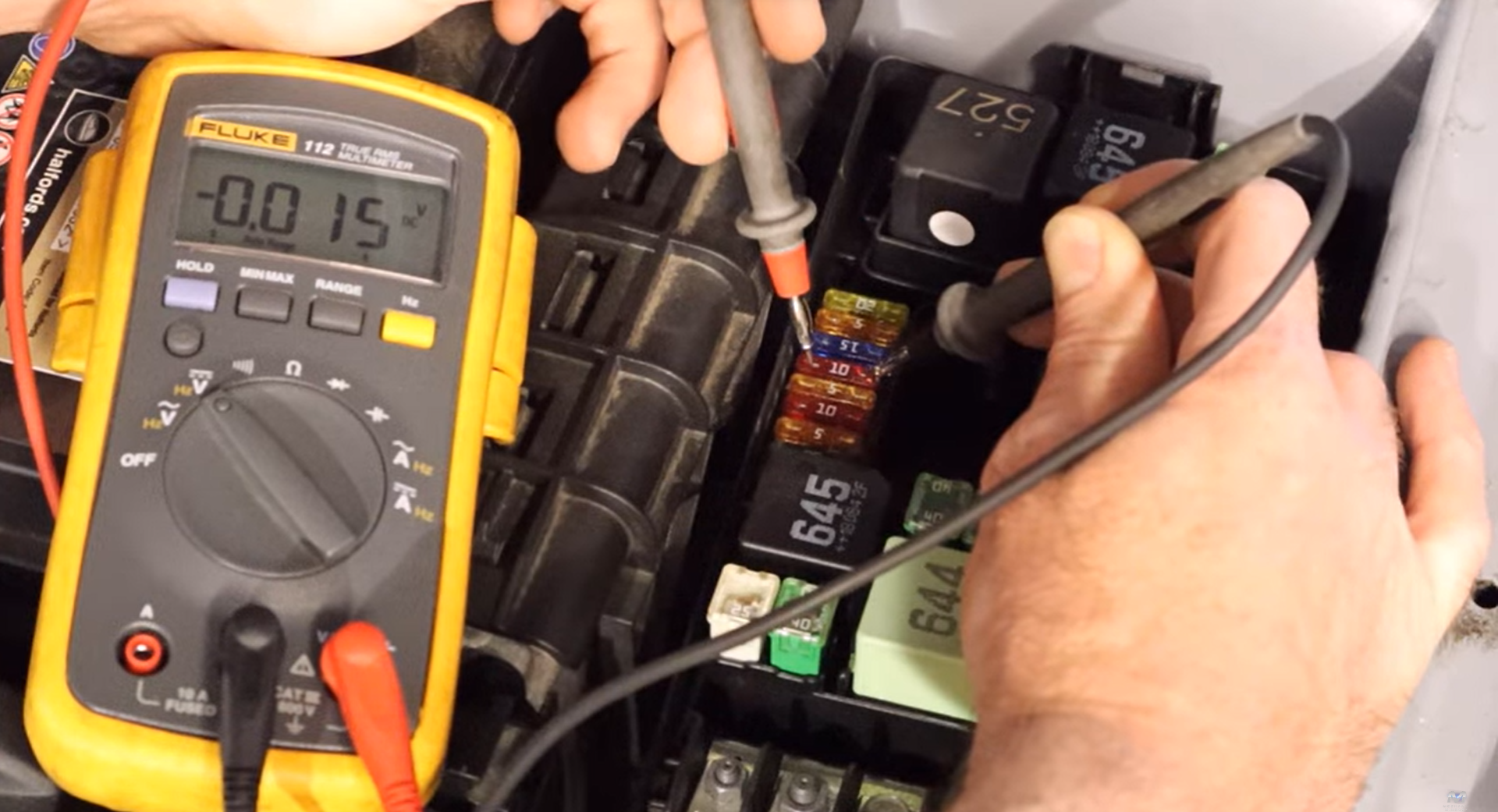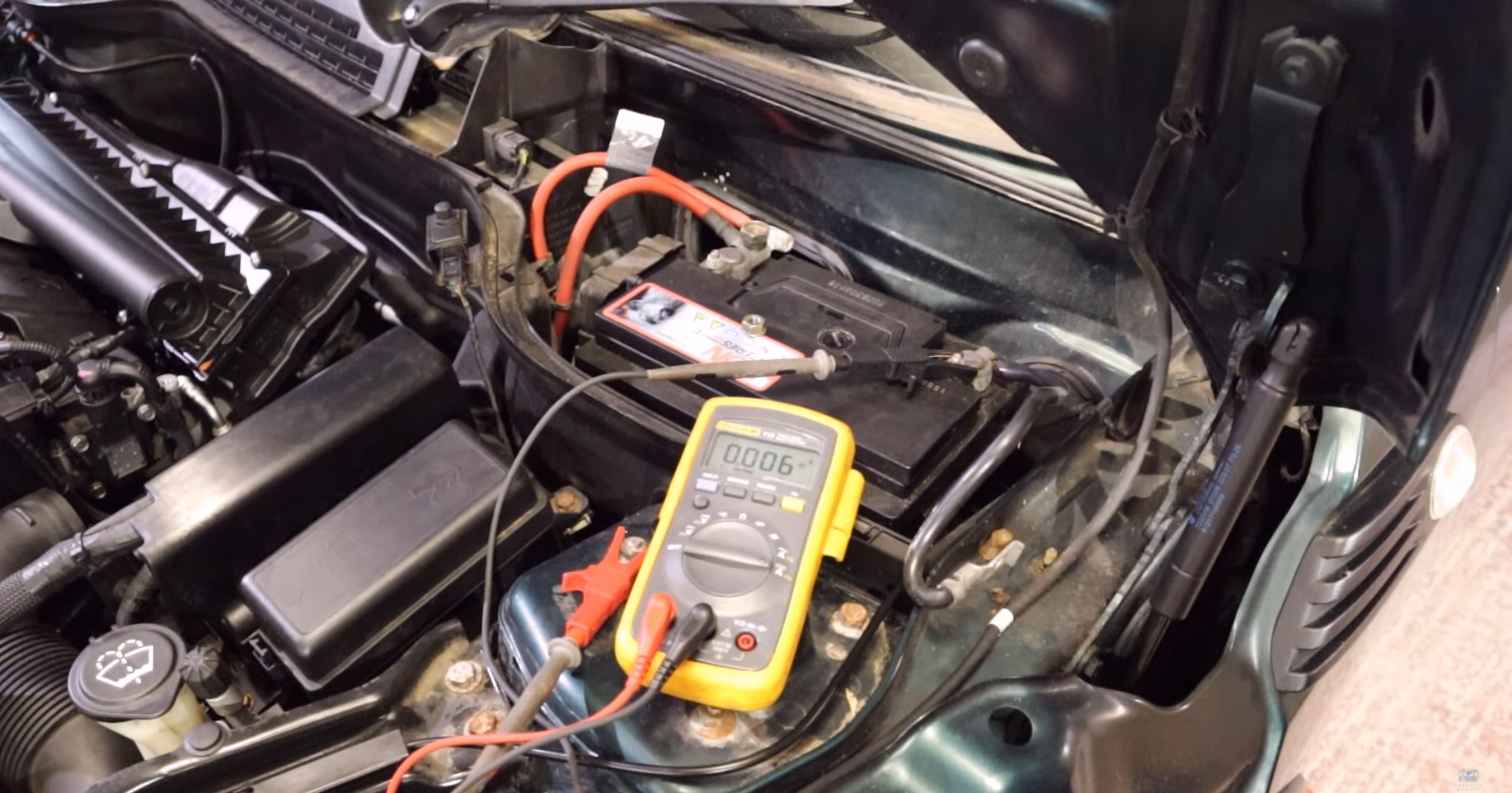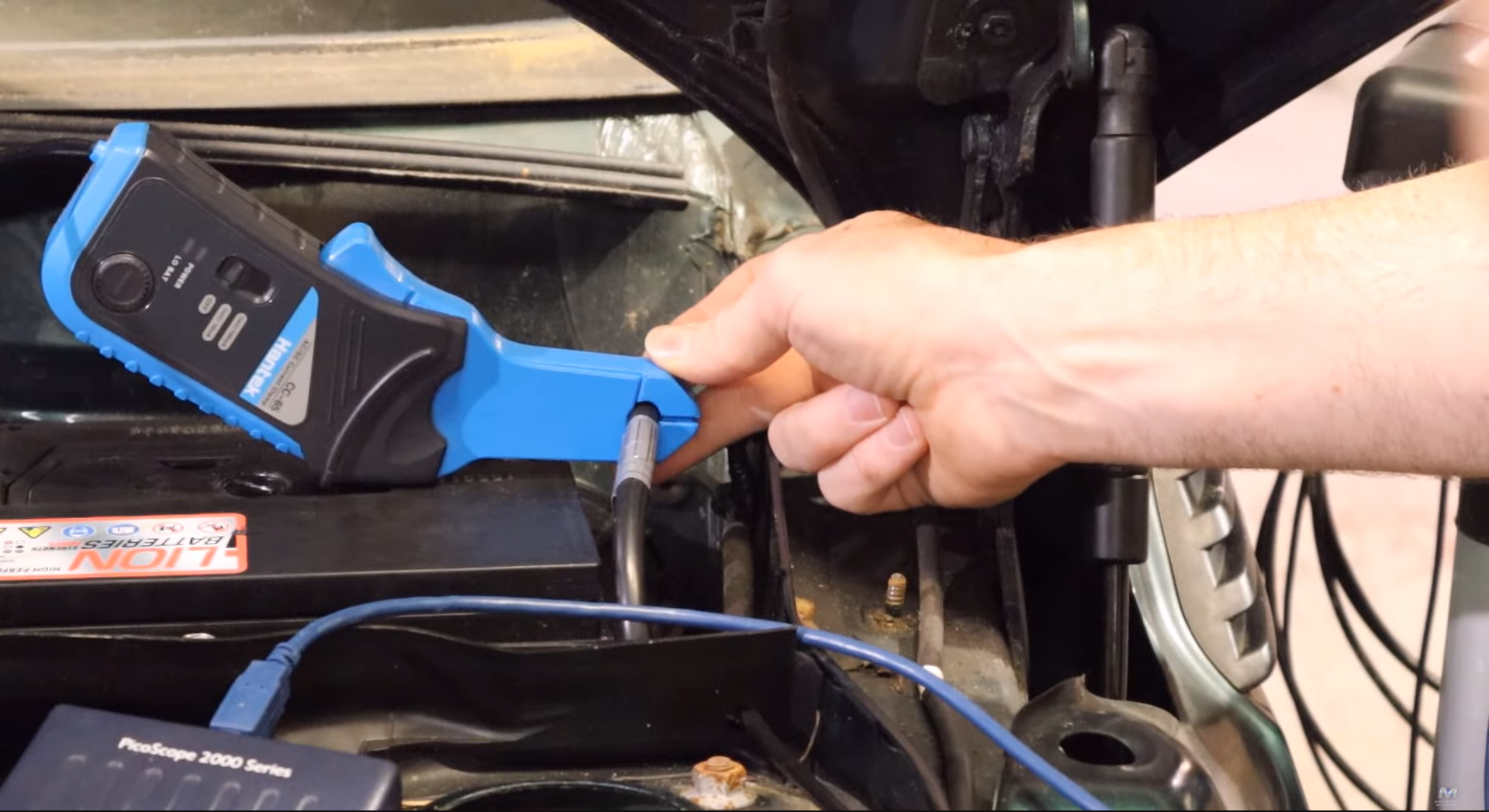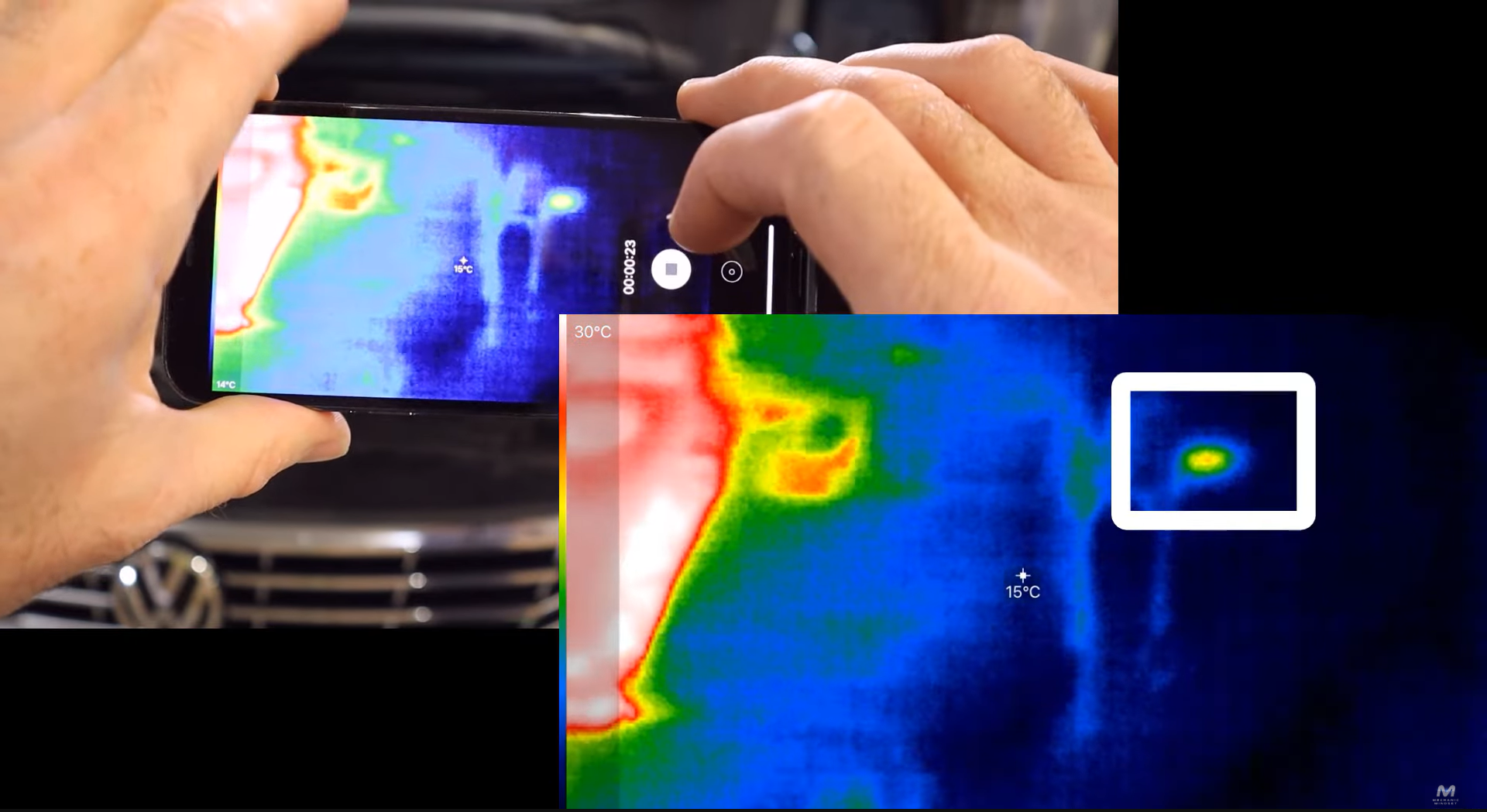4 Pro Tips for Battery Drain Test

4 Pro Tips for Battery Drain Test
4 Expert Tips for Battery Drain Diagnostics
WHETHER you're using a multimeter to find a battery drain or delving into the depths of parasitic draw testing armed with an oscilloscope and an amp clamp, the world of battery drain diagnostics is an ever-evolving puzzle. This guide is all about making your battery diagnostics faster and easier. We've got four great tips to help you work smarter and supercharge your efficiency. So let's power up and get started!

Tip 1: Easy Battery Drain Testing With a Multimeter
For our first tip, let's delve into the battery drain test using the multimeter and its ammeter function. The primary challenge with this method arises from having to disconnect the battery, potentially triggering additional issues and extending your diagnostic time. This approach eliminates the need to reset the time, date, radio stations and perform other calibrations after the battery disconnection, sparing you from this hassle on many vehicles. In unfortunate cases, steering angle sensors and tire pressure monitoring systems might demand a reset. This is my preferred method—the one I've always relied on.
How to Save Time With This Check
Prepare Your Multimeter:
Set the multimeter to DC current.
Swap the lead but remember to switch it back to prevent blowing the multimeter fuse.
Connect the Multimeter FIRST:
Attach the black lead securely to the negative side of the battery.
Place the positive lead on a good chassis ground.
The car should be in a low power state before continuing (ignition off)
Disconnect the Ground Lead:
Double-check all connections to avoid issues.
Carefully disconnect the ground lead from the chassis side of the car.
Take caution not to drop any nuts during this process.
Time-Saving Reading:
Now, observe the multimeter reading. It will indicate if you have a good drain while the car is asleep.
Note: The standard maximum battery drain is 20 to 50 milliamps, with some cars accepting up to 80 milliamps.
Can’t Access The Chassis Ground Strap?
In cases where the ground cable isn't easily accessible, there's another way to perform the test.
Connect the multimeter to the chassis ground.
Carefully lift the negative clamp off the battery post.
Before the clamp breaks contact with the battery post, slide the multimeter clamp lead under the clamp on to the post, maintaining a closed circuit.
By incorporating these steps and alternative methods, you can efficiently identify battery drain issues while working in a way that saves time and minimizes potential risks.
Our Battery Drain Diagnostics course shows you exactly how to set this up; this diagnostic course and lots more are all included with the Diagnostic Coach subscription.
Find our more and join Diagnostic Coach here.

Using a multimeter, you can efficiently perform a battery drain test without unnecessary complications.
Tip 2: Getting Amp Clamps to Work Like a Charm
Have you ever found yourself grappling with amp clamps during a parasitic drain test? We get it, the struggle is real. The snag with smaller oscilloscope amp clamps is that the hole through the jaws are usually too small for the negative ground cable. Why does this matter? The amp clamp jaws need to be completely closed during any current drain test to ensure accurate readings.
Try this if the ground cable is too thick for your amp clamp.
Convenient Amp Clamp Setup for Parasitic Draw:
Use a smaller diameter fused jump cable in place of the main battery ground.
Connect the amp clamp around the thinner battery cable.
This way the jaws are able to close.
Measure, enjoy!
In our Battery Drain Diagnostics course we explore the use of different amp clamp meters and oscilloscope amp probe measurements for battery drain; included with Diagnostic Coach!
Find our more and join Diagnostic Coach here.

The amp clamp’s jaws need to be tightly closed during any current drain test.
Tip 3: Locating The Battery Drain - Fuse Volt Drop Method
Once you've confirmed a drain using your ammeter or amp clamp, this method helps you figure out exactly where the drain is coming from - without waking the car up!
We call it the "Fuse Volt Drop Method." This method is based on the fact that when current is flowing through a piece of wire or a fuse, the voltage will drop ever so slightly. There's a handy chart called the "Fuse Volt Drop Chart" that helps you decode this drop.
But how do you take the measurement? Just place your multimeter leads on top of a fuse, measure the volt drop, and voila, you know there's some current flowing. The great part? No need to remove fuses, disturbing the car's peace.
But here's the catch: not all multimeters are created equal. If yours only goes down to 1 millivolt, it might not cut it. You need one that can go down to tenths of a millivolt (0.1 millivolt) for accurate readings. These seemingly tiny differences matter, especially when you look at the Fuse Volt Drop Chart. So, before you dive into this cool method, make sure your multimeter can speak millivolts!
Now that you're armed with a method that doesn't disrupt the car's sleep and helps you find the drain accurately. Go out there, make sure your tools are up to the task, and diagnose those battery drain mysteries with confidence!
We show you exactly how to perform the Fuse Volt Drop test in the Battery Drain Diagnostics course, and we also supply a fuse volt drop chart download for this test.
Find our more and join Diagnostic Coach here.

Fuse Volt Drop is a fantastic method; but for precise readings, invest in a millivolt-capable multimeter.
Tip 4: The Game-Changer: Thermal Camera
Imagine having the automotive world's best-kept secret in your toolkit – the thermal camera. I've got this Seek Thermal camera for the iPhone, but there are other cool ones like the FLIR (with dual cameras).
Now, what makes these thermal cameras the ultimate game-changer in diagnostics? This thermal camera lets you see what's cooking under the hood, quite literally. In a glance, you can spot heat signatures all over the vehicle, even with all the covers in place. No need to play guessing games. Take the little heat spot on the fuse box, for instance. It might not be sizzling, but it's warm enough to catch your attention. Pop that fuse box open, and boom, you find a warm relay.
These thermal cameras are like superheroes for diagnosing battery drain. They're super sensitive and save you loads of time when you do your battery drain diagnostics. So, consider adding a thermal camera to your toolkit, and let it unveil the mysteries of your vehicle's heat signature with ease!
Our Battery Drain Diagnostics course explores everything you need to know about Battery Drain Diagnostics.
Find our more and join Diagnostic Coach here.

Thermal camera – the time-saving superhero in the world of battery drain diagnostics.
We all know the frustration of a device running out of juice unexpectedly. I trust you found these tips beneficial for your parasitic battery draw testing. By working smarter and embracing these insights, you empower yourself to tackle the ever-evolving puzzle of battery health. So, let's power up and forge ahead with efficiency!
Check out the Diagnostic Coach program where we you can access the full battery drain diagnostics training course.
